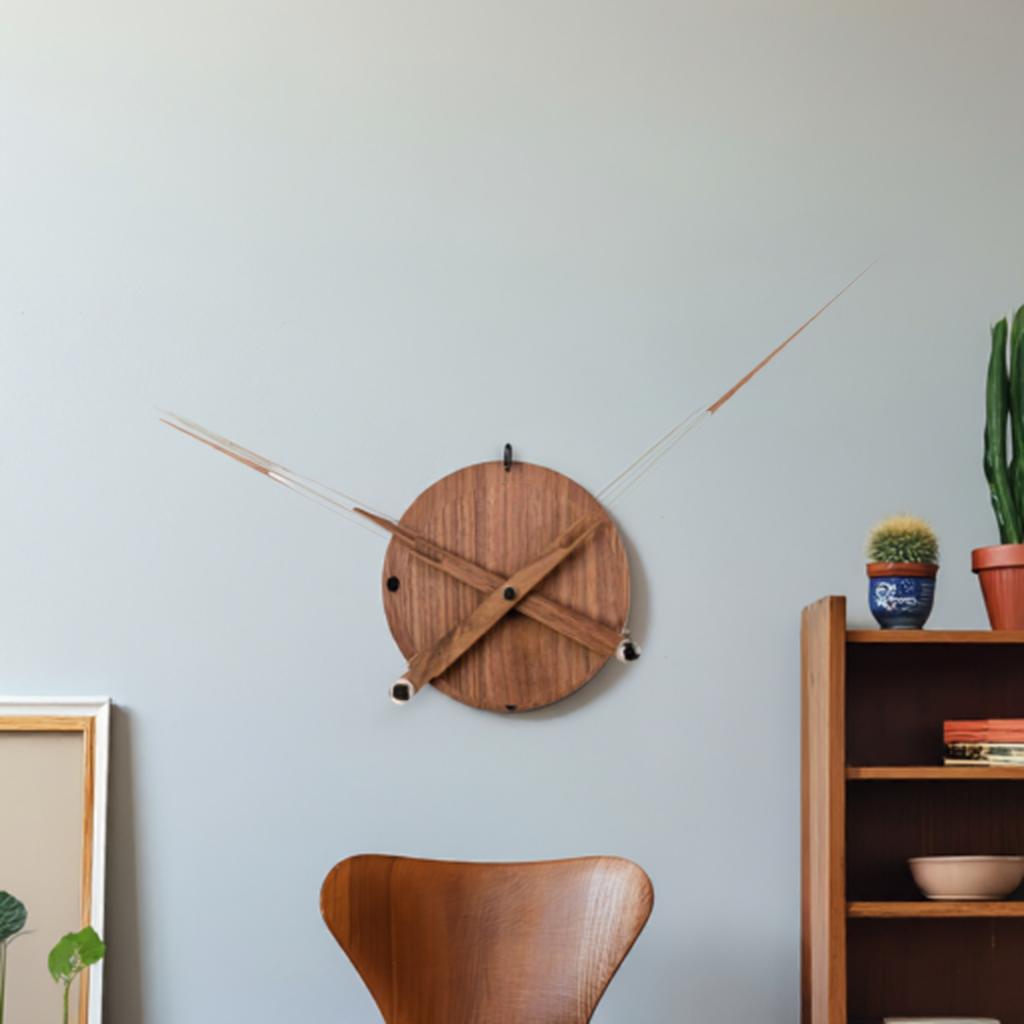
What is the Best Way to Choose a Wood Wall Clock? Timeless Design Tips for Every Room
Share
Wood wall clocks have become a staple in modern and traditional home decor alike, offering a perfect blend of functionality and aesthetic appeal. Whether you’re going for a rustic farmhouse vibe, a sleek minimalist look, or a cozy cottage atmosphere, a wooden clock can be the perfect finishing touch to complete any room. But with so many options available, how do you choose the best wood wall clock for your space? This guide will walk you through essential design tips and considerations to help you pick the perfect wooden clock for any room in your home.
1. Consider the Room’s Style and Functionality
The first step in choosing the right wood wall clock is to consider the style and function of the room where it will be placed. Ask yourself, What is the room’s main purpose? and What kind of decor do I want to enhance? Here’s a breakdown by room:
- Living Room: The living room is often the centerpiece of the home, where guests are entertained and families gather. For this space, a larger, statement wood clock can serve as both a functional piece and a piece of art. Clocks made from darker woods like walnut or oak can add a sense of elegance, while lighter woods such as pine or maple work well for casual or Scandinavian-inspired designs.
- Kitchen: In the kitchen, you’ll likely want a more functional wood wall clock that’s easy to read and resistant to humidity. Consider going for a simple, clean design that matches your cabinetry or other wooden kitchen utensils. For a rustic or farmhouse kitchen, a distressed wood clock with large, bold numbers might be a perfect fit.
- Bedroom: Your bedroom should evoke a sense of calm and relaxation, so choose a wood wall clock with soft, natural tones that complement the existing color palette. Silent movement clocks are an excellent choice here, ensuring that the ticking doesn’t disturb your sleep. Opt for a minimalist design if your room has a modern feel, or go for a vintage clock if your space leans toward traditional or bohemian aesthetics.
- Home Office: A wood wall clock in the office should strike the right balance between style and professionalism. You want something that blends seamlessly with your work environment but also keeps you on schedule. Consider a sleek, modern clock with minimal embellishments if your office is designed for productivity. If you’re working from a creative space, perhaps a quirky, asymmetrical wooden clock will spark some inspiration.
2. Match the Wood Type to Your Decor Style
The type of wood you choose for your wall clock can greatly impact how it fits with your room’s decor. Here are some common wood types and the decor styles they best complement:
- Oak: Oak clocks are durable and have a bold, distinctive grain. They work well in traditional, rustic, or farmhouse-style rooms, bringing warmth and texture to your decor.
- Maple: Maple is lighter and has a smooth grain, making it ideal for more contemporary or minimalist rooms. It’s a great option if you’re looking to brighten up a space while maintaining a natural feel.
- Walnut: Walnut has a rich, dark finish that conveys sophistication and luxury. If you’re decorating a formal living room or home office, a walnut wood clock can add an air of elegance.
- Pine: Pine is softwood with a light, fresh appearance, ideal for casual, country, or cottage-style interiors. It’s also a great choice for coastal or nautical-themed rooms due to its lighter tones.
- Reclaimed Wood: For an eco-friendly option, reclaimed wood clocks add character and history to your space. They’re perfect for rustic, industrial, or eclectic styles and often come with unique imperfections that tell a story.
3. Size Matters: Proportion and Placement
When choosing a wood wall clock, size is a critical factor. A clock that is too small will get lost in the room, while one that is too large can overwhelm the space. Here's how to find the right size:
- Large Clocks (24 inches or more): These work best in spacious rooms like the living room or dining room, especially when placed over a fireplace, a couch, or a dining table. They can act as a bold focal point or be part of a gallery wall arrangement. Just ensure the clock is proportionate to the size of the room and the surrounding furniture.
- Medium Clocks (12–24 inches): These clocks are versatile and can fit in most rooms, including the kitchen, office, or entryway. If you have a more modest space, a medium-sized clock provides balance without dominating the decor.
- Small Clocks (Under 12 inches): Small clocks are ideal for tight spaces or as part of a multi-piece wall arrangement. You could hang a small wood clock in a bedroom, bathroom, or hallway for a subtle touch of design.
4. Design Features: Numbers, Hands, and Shape
Once you’ve narrowed down the style, wood type, and size, it’s time to focus on design details like the clock’s numbers, hands, and overall shape. These elements can add character to your wood wall clock and tie it into your decor theme.
- Numbers: Clocks come with various number styles, including Roman numerals, Arabic numbers, or no numbers at all. Roman numerals often lend a vintage or classic feel, while Arabic numbers are more modern and easy to read. For a minimalist space, a clock without numbers creates a sleek and contemporary look.
- Clock Hands: The shape and color of the clock hands also contribute to the overall aesthetic. Thin, delicate hands can give a clock an elegant appearance, while thick, bold hands create a more industrial or modern vibe. The color of the hands should contrast enough with the face to be readable but still complement the room’s palette.
- Shape: While most clocks are round, don’t be afraid to experiment with different shapes. Rectangular or square wooden clocks can add an unexpected touch of geometry to a room. Asymmetrical or abstract designs work particularly well in modern, eclectic, or artistic spaces.
5. Choosing Clocks for Different Decor Styles
Let’s break down how to match a wood wall clock with various interior design styles:
- Rustic/Farmhouse: Opt for clocks made from distressed or weathered wood, featuring large, bold numbers. Reclaimed wood and visible knots or grain add to the charm.
- Modern/Minimalist: Look for sleek, smooth wood finishes with simple, clean lines. A clock with no numbers or subtle detailing will blend seamlessly into your minimalist space.
- Bohemian: Choose a wooden clock with intricate designs or natural, unfinished wood for an earthy, organic feel. Macrame or woven accents can enhance the boho vibe.
- Industrial: A dark wood clock with metal accents or exposed hardware can complement the raw, unfinished look of an industrial-style space. Opt for clocks with oversized gears or bold, mechanical features.
Conclusion
A wood wall clock can be both a practical tool and a beautiful design element, helping to set the tone of any room. By considering your room’s style, the type of wood, the clock’s size, and design features, you can find the perfect wood wall clock to complement your decor. Whether you prefer a rustic, modern, or eclectic style, there’s a timeless wooden clock out there that will complete your space. Happy decorating!
If you're looking for more information on simple steps for YOU to take, making an effort to live more sustainably, visit our blog for more informational articles. We'll also take you shopping for ways to easily switch out your current decor & kitchen gadgets for those more ecofriendly.
Our brand is a group of people who love life, outdoors, RV life, cabin living and endeavoring to make a difference in the world simply one step at a time. We're every age and we often get excited viewing new products that come out during happy hour on Friday evenings!
We'd love to have you join us!
Sign up below and don't forget to follow us on your favorite social media channel.








